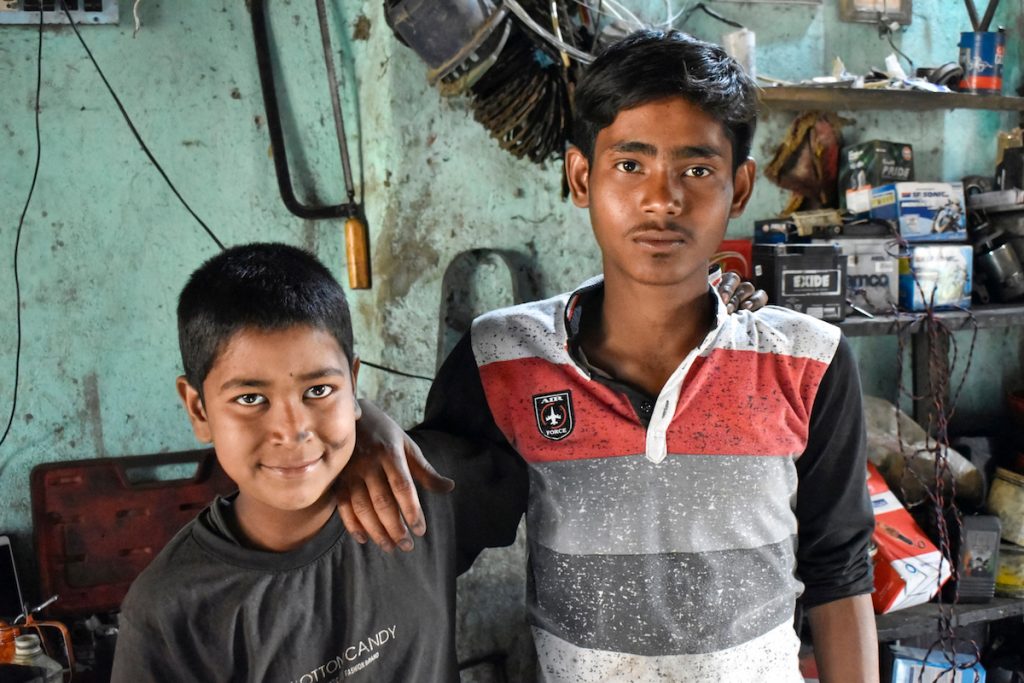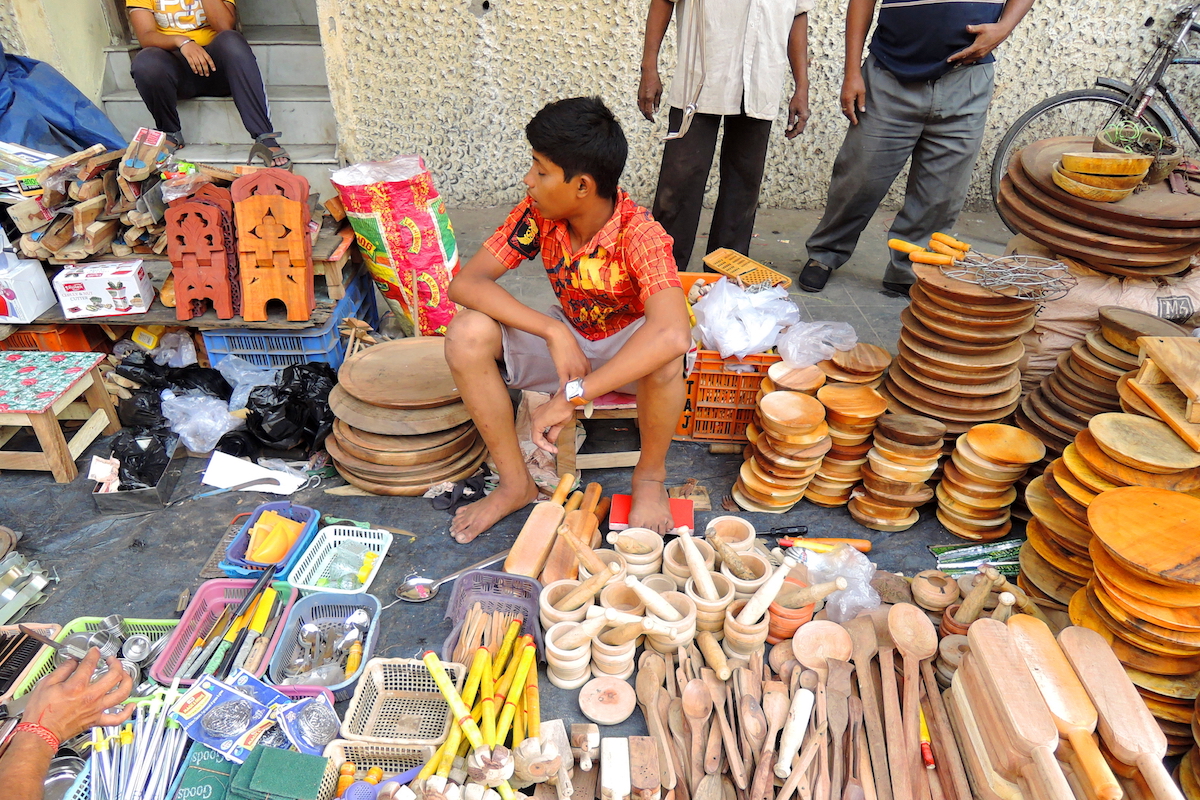Vivash was 7 years old when his father, a cart vendor, died from tuberculosis some three years ago. Since then the boy has worked at a small eatery in India’s eastern state of West Bengal to help support his mother, a younger brother, and an elder sister.
Vivash was in class two when he had to abandon his studies and look for a job. In the end a relative helped him get work at the eatery which earns him Rs 2,000 (US$ 25) a month.
“I couldn’t go to school because back home there was no one to earn money. I wanted to study and become a teacher but when my father died, I needed to make money. My family is now happy with me,” Vivash said at his roadside workplace.
“I sometimes want to leave all this and go to the school but who will pay my fees and who will give food to the family? This is the reason why I earn money here,” he said.
Abhinav Das, 14, from West Bengal’s Murshidabad area, works as a motor mechanic and earns around 5,000 Rs (US$80) a month.
Last year his father lost his laboring job due to the nation-wide COVID-19 lockdown resulting in Das having to leave school and earn money for his family.
“We used to have nothing to eat at our home,” Abhinav said. “My mother used to be sick all the time and she had no money even for her medicine. What else would have I done?”
For the teenager his initial period of work was tumultuous.
“The owner of this workshop used to thrash me even for minor mistakes. Thrashing and abusing me became his habit but after 10 months I became skilled enough and he now treats me quite well,” he said.

Sudhi Chunaru, 12, from West Bengal’s Junput area, works as a domestic worker but she once wanted to become a mathematician. Her father was a farmer who had fallen into debt and when the COVID crisis hit, the family was plunged into further financial distress, resulting in Sudhi abandoning her education for work.
“Many of the children of my age are working now. There is nothing bad in it. Our family is poor and that is why I earn for them. I am happy to help my father through my earnings. I loved to study but we had no money for that,” Sudhi said.
Like Vivesh, Abhinav and Sudhi, there are some 10 million children in India from impoverished families who have abandoned schooling to earn money. In the state of West Bengal alone there are currently a million child laborers.
The economic effects of the pandemic have made the UN’s sustainable development goal of eliminating child labor worldwide by 2025 a seemingly unreachable target. A recent report by the International Labor Organization said that the pandemic risks sending millions more children into labor, resulting in the first rise in child labor after 20 years of progress in lessening it.
In a bid to address the problem Caritas India last year launched the ‘Surokhit Shaishav’ program which is supported by Caritas Germany. The program is being implemented in the six most vulnerable districts covering 164 villages of West Bengal.
Caritas spokesman Anjan Beg said the program aims to strengthen child protection systems and promote children’s rights to education, inclusive development, and social participation.
“The program focuses on greater convergence of government and civil society organizations in creating awareness amongst communities,” Beg said.
Manisha Bhattacharya, joint labor commissioner from the West Bengal government, is working in close coordination with Caritas on the project which also includes financial assistance for children pursing higher studies and income security programs for workers from the so-called unorganized sector.
“This is being done to keep the children of this populace away from the menace of child labor,” Bhattacharya said.
Worldwide it is estimated that there are 152 million children working in conditions of labor. Some 62 million of them are in the Asia-Pacific region.







